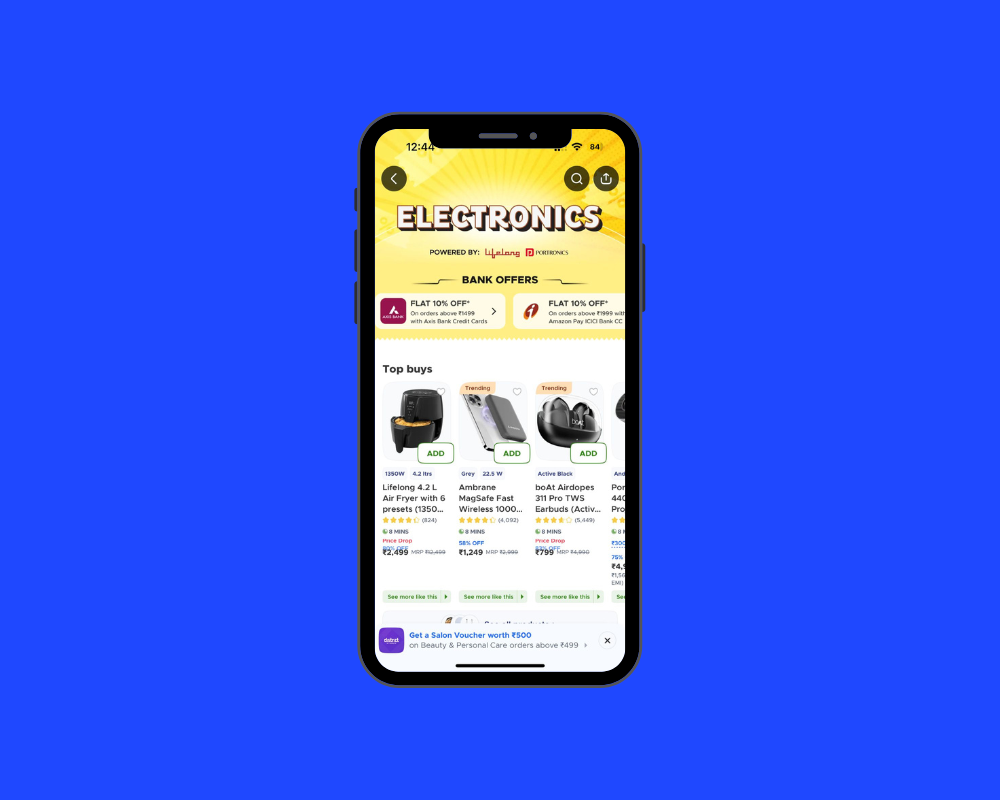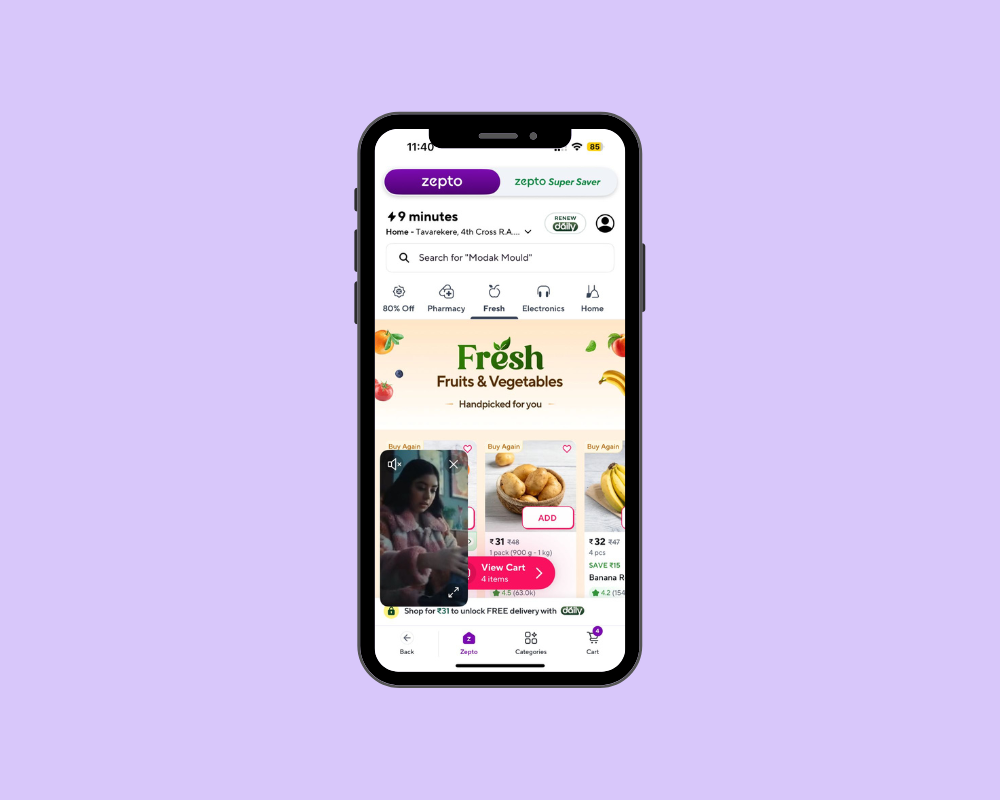Return on Ad Spend (ROAS) is a staple in every performance marketer’s toolkit. It’s clean, quantifiable, and offers a quick pulse check on whether your ads are converting to revenue. For D2C brands scaling across marketplaces and Quick Commerce platforms like Blinkit or Zepto, a strong ROAS signals product resonance, campaign effectiveness, and acquisition efficiency.
But ROAS is inherently backward-looking. It measures efficiency — not opportunity. It tells you how a campaign performed, but not where growth is being left on the table. A healthy ROAS can easily mask regional skews, incrementality issues or discoverability gaps that silently cap scale.
To grow sustainably, you need to widen the aperture. ROAS alone can’t tell you where you're missing out. That’s where diagnostic metrics — impression share by daypart, CTR, add-to-cart rate, and category-level share of voice — come in. Because on algorithmic platforms like QCom, success isn’t just about performance. It’s about presence.
So You’ve Got ROAS. Now Build a Growth Engine.
In Quick Commerce, performance marketing isn’t just about cost-efficiency — it’s about capturing intent moments and owning algorithmic shelves. ROAS tells you what worked. But to improve outcomes consistently, you need to understand why it worked — and where it’s quietly failing.
Here’s how to close that loop:
1. Impression Share per SKU × Daypart
Find your invisible winners. Let’s say your protein bars are clocking a 3.5x ROAS. Great — until you break it down and find that 80% of impressions happen between 10 AM and 2 PM, while post-workout demand (6–10 PM) is underexposed. That’s a visibility gap, not a performance one.
Ask:
- Are we surfacing during high-intent micro-moments?
- Are certain SKUs being algorithmically suppressed due to past click data?
What to do: Boost bids in underrepresented dayparts, reallocate budgets toward volatile time slots, and test SKU-level targeting in non-peak hours.
2. Click-Through Rate (CTR)
CTR isn’t just a vanity metric — it’s your first relevance signal. A low CTR on a high-ROAS campaign means you’re converting a narrow subset of users while the majority scroll past.
Ask:
- Are our product tiles thumb-stopping enough?
- Does pricing or pack-size stand out next to competitors?
- Are we surfacing in shelves where we don’t belong?
Pro tip: Benchmark CTR by category and slot. If you're underperforming in “Late Night Snacks” but excelling in “Healthy Picks,” the issue isn’t the product — it’s the context.
3. Add-to-Cart Rate (ATC)
ATC is a key pre-conversion signal — it tells you if shoppers are interested. A high ATC with low purchases usually points to friction post-consideration.
Take this real-world example:
A user adds a protein bar to their cart at 6:34 PM, right after a workout — a classic high-intent window. But look at what happens at checkout:
The item total is ₹105, but the final price balloons to ₹142. Why?
- ₹7 handling charge
- ₹30 delivery charge
- A prompt to spend ₹94 more for free delivery

This silent price creep creates what we call “conversion fatigue.” The shopper's intent was strong — they’ve already added the item — but now they’re weighing whether the ₹37 markup for a single protein bar is worth it. This is friction after interest.
These micro-decisions are make-or-break in QCom’s sub-90-second purchase journeys.
4. ATC-to-Purchase Conversion Rate
Identify final-mile leakage. Once a product is in the cart, every drop-off is a red flag. This conversion rate isolates platform-side issues — from payment failures to delivery breakdowns.
Use it to:
- Flag fulfillment zones leaking revenue
- Adjust pricing logic (₹99 turning into ₹123 at checkout is a silent killer)
In QCom’s sub-90-second purchase flows, trust friction is a conversion tax.
5. Category Share of Voice (SOV)
ROAS tells you what’s working. SOV tells you where you’re not even showing up. Say you’re a snack brand in Zepto’s “Guilt-Free Munchies” but only appear in 8% of relevant impressions across the top 10 cities — your ads may be efficient, but you're missing most of the action.
Use SOV to:
- Justify incremental spend in underrepresented categories or geographies
- Push for organic shelf placement with platforms
- Benchmark against competitors — if you’re at 3x ROAS but they own 4x more shelves, you’re being outplayed, not outperformed.
Your Growth Loop: Diagnose → Optimize → Scale
Here’s the internal narrative smart D2C teams should adopt:
“We use ROAS as our output metric — but we use Impression Share, CTR, ATC, and CVR as diagnostic inputs. They show us what performance data alone doesn’t.”
Quick Commerce in India is evolving rapidly — algorithmic shelves and personalized feeds are now the norm. Competing here requires more than sharp creatives and decent CAC. It demands deeper diagnostics, faster feedback loops, and the discipline to look beyond RoAS.
Your Personal Diagnostic Cheat Sheet:






.png)

